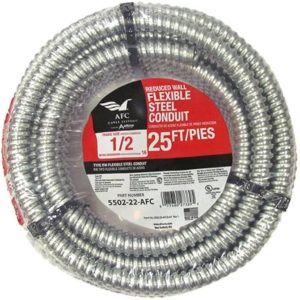Which are the most common type of residential roofing?
Every home, regardless of its architectural style or geographic location, is anchored by one significant component – its roof. Residential roofing is a home’s primary defense against the elements, plays a key role in energy efficiency, and contributes substantially to a house’s curb appeal. With so many roofing materials available in the market, one might wonder: What is the most common type of residential roofing?
Features of a common residential roofing
-
The Dominance of Asphalt Shingles
Asphalt shingles reign supreme as the most popular residential roofing material in many parts of the world, especially in North America. Their dominance in the market can be attributed to a blend of factors ranging from cost efficiency to ease of installation.
-
Cost-Effective Choice
One of the primary reasons homeowners gravitate towards asphalt shingles is their cost-effectiveness. Compared to other roofing materials like metal, slate, or tile, asphalt shingles are more budget-friendly. This affordability, coupled with their durability, furnishes homeowners with a high return on investment, making them an attractive choice for those seeking quality and value.
-
Versatility in Aesthetics
Asphalt shingles are not just about functionality; they offer considerable aesthetic versatility. Available in various colors, styles, and textures, they can be tailored to suit different architectural styles. Whether aiming for a contemporary glimpse or a more traditional appearance, asphalt shingles provide ample choices to match and enhance a home’s design palette.
-
Ease of Installation and Repairs
Another factor contributing to the popularity of asphalt shingles is the ease of installation. Unlike other roofing materials that mandate specialized skills or tools, asphalt shingles can be installed relatively quickly, reducing labor costs. Furthermore, if damaged, individual shingles can be replaced without overhauling large roof sections, making repairs simpler and more cost-effective.
-
Durability and Lifespan
While asphalt shingles might not boast the longevity of materials like slate or tile, they offer a commendable lifespan. With proper installation and maintenance, homeowners can expect their asphalt shingle roof to last anywhere from 20 to 30 years. This durability, combined with the material’s resistance to environmental elements like wind, rain, and snow, ensures that homes remain protected through varying seasons.
-
Recyclability and Environmental Considerations
In an age where sustainability is gaining prominence, it’s worth noting that asphalt shingles can be recycled. Old shingles can be processed and repurposed for distinct uses, including road construction. This ability to recycle, while not yet widely adopted, positions asphalt shingles as a choice that can align with eco-friendly considerations.
-
Adaptability to Various Climates
A notable advantage of asphalt shingles is their adaptability to diverse climates. Whether in a region that experiences heavy snowfall, intense sun, or torrential rains, asphalt shingles prove resilient. Some are specially designed with reflective granules to deflect UV rays, making them suitable for areas with strong sunlight. Conversely, in colder regions, they provide adequate insulation, ensuring homes remain warm.
-
Weight Considerations
Roofing materials vary in weight, and some, like slate or tile, require additional structural support due to their heaviness. Asphalt shingles, on the other hand, strike a balance between sturdiness and weight. Their relatively lightweight nature ensures that most homes can support them without the need for additional structural enhancements.
-
Safety Features
Safety is paramount when contemplating roofing materials. Asphalt shingles offer fire resistance, with many brands providing options that are class-A fire-rated. This means they can defy severe exposure to fire originating from outside the building, providing homeowners with an added layer of protection.
-
Variety in Types
While ‘asphalt shingles’ is a general term, it’s worth noting that they come in different types, primarily architectural (or dimensional) shingles and three-tab shingles. Architectural shingles are multi-layered, offering a dimensional appearance, while three-tab shingles are single-layered and flat. This variety ensures homeowners can select a type that best suits their aesthetic preferences and budgetary considerations.
-
Economic Impact
Beyond individual homes, the prevalence of asphalt shingles has broader economic implications. Their widespread use has ushered in the creation of many manufacturing and installation jobs. Furthermore, because they are predominantly produced using local materials, the industry helps boost local economies, lessening the demand for imported roofing materials.
Asphalt shingles have emerged as the most common choice in the vast landscape of residential roofing materials. Their blend of affordability, aesthetic versatility, ease of installation, and durability makes them a favorite among homeowners and contractors. While roofing trends will evolve and new materials might gain traction, the time-tested appeal of asphalt shingles ensures they remain a cornerstone in residential roofing. For those contemplating a roofing project, understanding the benefits of asphalt shingles can clarify decision-making, ensuring the chosen material aligns with functional needs and design aspirations. When faced with severe roof damage after a hailstorm, many homeowners sought the expertise of experienced roofers in Tulsa to ensure timely and effective repairs.














Post Comment
You must be logged in to post a comment.